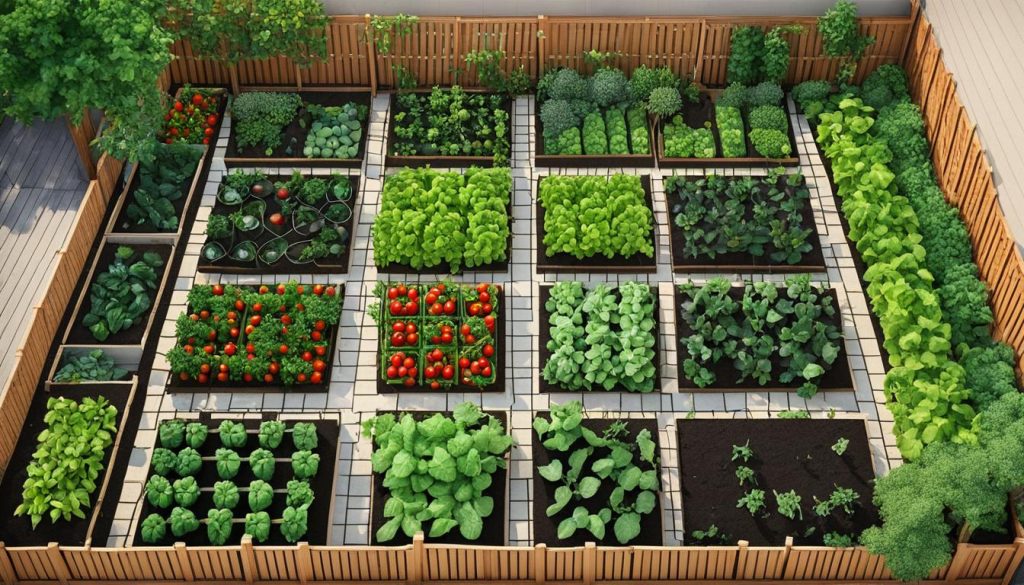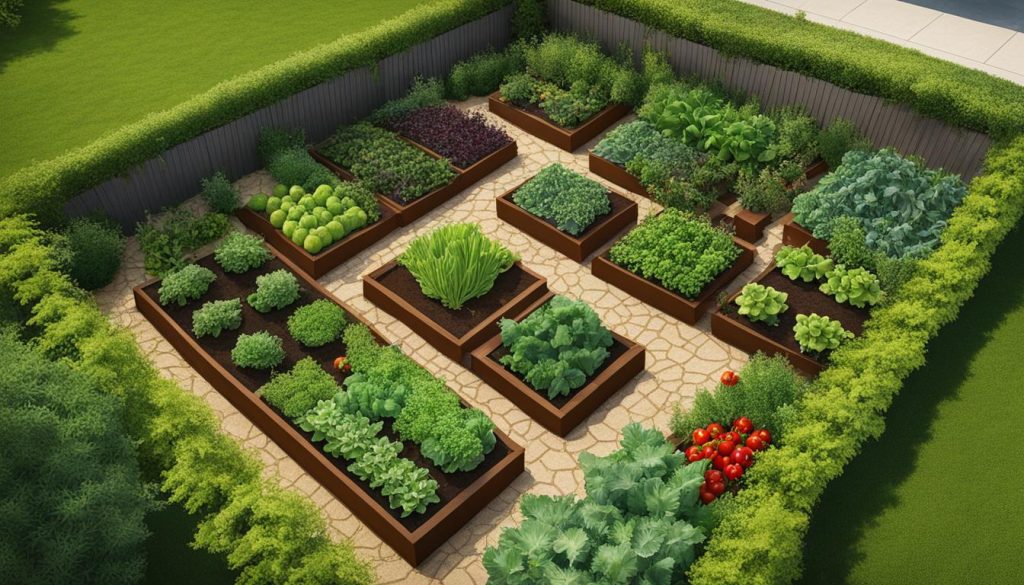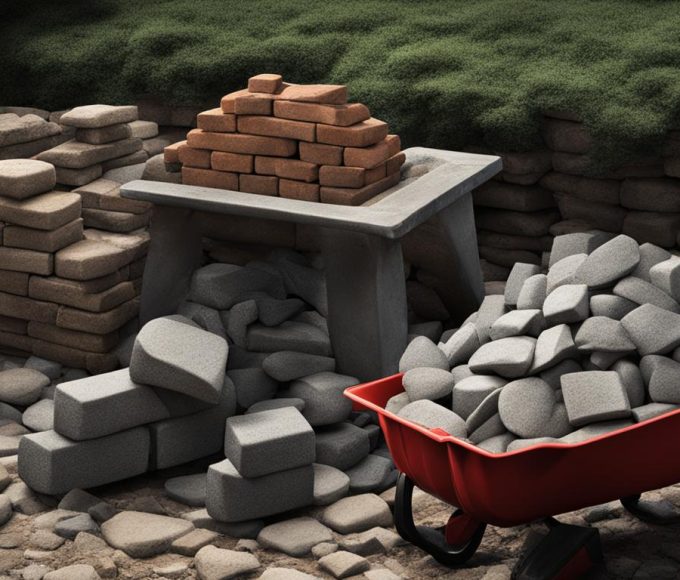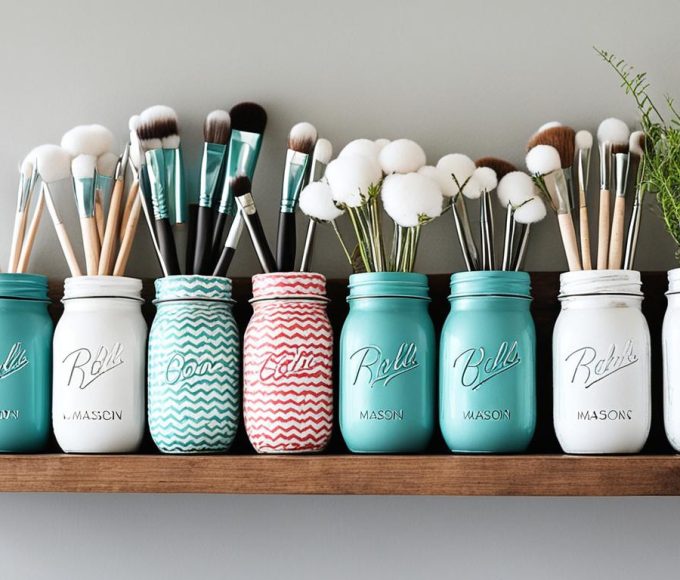Welcome to the exciting world of creating your very own backyard vegetable garden layout! Whether you’re an experienced gardener or just starting out, designing a vegetable garden provides a rewarding and fulfilling experience. In this article, we will explore some fantastic vegetable garden design ideas that will help you maximize your space and create a thriving garden. So, let’s get started and turn your backyard into a bountiful oasis of fresh produce!
When it comes to creating your backyard vegetable garden layout, there are a few key factors to consider. Firstly, think about the types of vegetables you want to grow. Are you a fan of juicy tomatoes, crisp lettuce, or maybe some crunchy cucumbers? Understanding your desired harvest will help you plan the layout accordingly.
Understanding the Light Requirements
In order to create a successful vegetable garden layout, it’s important to understand the specific light requirements of each plant. Most vegetables thrive in abundant sunlight, with tomatoes needing 6 to 8 hours of full sun per day. Leafy greens like lettuce and spinach can tolerate some shade.
Choose a location for your garden that receives ample sunlight and avoid areas with too much shade. You want to provide your vegetables with the optimal amount of sunlight for them to grow and thrive. Position your garden in an area where it will receive the most direct sunlight throughout the day.
Maximizing Space in Your Backyard Garden

When it comes to planning your vegetable garden layout, space is a crucial consideration. Whether you have a large backyard or limited space, there are strategies you can employ to maximize the use of every square inch. One popular technique is raised bed gardening, which not only allows you to make the most of your available space but also provides other benefits like improved drainage and prevention of soil compaction.
If you have a large backyard, one factor to consider is the accessibility to water. Choosing a location for your garden that is close to a water source will make watering your plants more convenient. Additionally, you’ll want to ensure that the area gets sufficient sunlight throughout the day.
For those with limited space, raised bed gardening can be a game-changer. By building raised beds, you can effectively utilize vertical space and create a productive garden even in small areas. Raised beds also have the advantage of better control over the soil quality, as you can fill them with nutrient-rich soil and amendments tailored to your plants’ needs.
To create a raised bed, choose the right materials based on your preference and budget. Common options include untreated wood, concrete blocks, or recycled plastic lumber. Consider the dimensions of your raised bed based on the available space, ensuring that it is wide enough for proper plant spacing and easy maintenance.
Incorporating raised beds into your vegetable garden layout not only maximizes space but also creates an organized and visually appealing garden. You can even get creative with different raised bed designs, such as tiered beds or curved shapes, to add aesthetic appeal to your backyard.
Remember, the goal is to make the most of your available space and create a thriving garden that suits your needs. Whether you have a large backyard or a small urban patio, raised bed gardening offers a practical and efficient solution to maximize space and grow an abundance of fresh vegetables, herbs, and flowers.
Incorporating Companion Planting
Companion planting is a valuable technique that can enhance the productivity and health of your vegetable garden. By planting vegetables next to each other, you can benefit from natural pest control, improved soil fertility, and a balanced ecosystem.
Companion planting in your vegetable garden layout creates a harmonious environment where plants support and thrive off one another. For example, planting onions and carrots with tomatoes can help repel pests that commonly affect tomatoes, while also providing a natural deterrent for weeds. Similarly, interplanting lettuce and onions with cucumbers can help improve soil quality and reduce the likelihood of pests attacking your cucumber plants.
It’s important to consider which plants are beneficial to each other and their compatibility in terms of light and space requirements. A companion planting guide can provide you with valuable insights on the best plant combinations to maximize the benefits in your vegetable garden.
Remember, companion planting is not only beneficial for improving plant health and productivity but also for creating an aesthetically pleasing garden. The careful combination of different colors, heights, and textures can transform your vegetable garden layout into a visually vibrant and appealing space.
By incorporating companion planting into your vegetable garden layout, you can create a thriving ecosystem that naturally deters pests, enriches the soil, and promotes the overall success of your garden.
Design Ideas for Your Vegetable Garden Layout
Your vegetable garden layout can be both functional and visually appealing. By incorporating creative design ideas, you can enhance the beauty of your garden while optimizing its productivity.
Consider planting tall sunflowers alongside climbing beans or trellised cucumbers for a stunning display of height and texture. The vibrant blooms of sunflowers will add a pop of color to your garden, while the beans and cucumbers will benefit from the support provided by the sunflowers.
Intercropping is another ingenious technique to maximize space and ensure multiple harvests. This involves growing different crops within the same area, allowing you to grow more vegetables in a limited space. For example, you can plant fast-maturing radishes between rows of slower-growing tomatoes or lettuce.
Experiment with different designs to create a unique and functional vegetable garden layout. Consider dividing your garden into blocks dedicated to specific types of vegetables. This zoning technique not only helps with organization but also allows you to cater to the unique needs of each plant. You can also try planting in rows, arranging plants by height. This visually pleasing layout adds structure to your garden and makes it easier to access and tend to your plants.
Get creative and have fun with your vegetable garden design. Allow your imagination to run wild and try out different arrangements, shapes, and patterns. Remember to take into account the specific needs of your chosen plants, such as light requirements and spacing, while planning your layout.
Backyard Garden Planning Tips
When planning a backyard vegetable garden layout, it’s important to consider the specific needs of your space. Taking the time to plan ahead will set you up for a successful and thriving garden. Here are some helpful tips to guide you in the process:
1. Assess Your Growing Area
Start by evaluating your potential growing area and understanding its unique characteristics. Determine how much sunlight the area receives throughout the day. Most vegetables require at least six hours of direct sunlight, so choose a spot in your backyard that gets ample sunshine.
2. Consider Accessibility and Monitoring
When selecting a location for your vegetable garden, consider its proximity to your house. Having your garden near your house makes it easy to access for watering, weeding, and harvesting. It also makes it convenient to monitor the growth and health of your plants.
3. Account for Existing Vegetation
Observe your backyard for any existing vegetation that may compete with your vegetable garden for resources such as sunlight and nutrients. Take note of trees, shrubs, or other plants that cast shade or have invasive root systems. Plan your garden layout accordingly to avoid hindering the growth and productivity of your vegetables.
4. Ensure Access to Water
Water is crucial for the success of your backyard vegetable garden. Ensure that you have easy access to a water source, such as a hose or irrigation system, to provide consistent moisture to your plants. Consider installing a rain barrel to collect and utilize rainwater, reducing your reliance on municipal water.
5. Start Small and Expand Over Time
If you’re new to backyard gardening, it’s a good idea to start small with a few vegetable beds or containers. Starting small allows you to learn and adjust as you go, gaining confidence and knowledge along the way. You can always expand your garden in the future as you become more experienced and comfortable with the process.
By keeping these tips in mind, you’ll be well on your way to planning a backyard vegetable garden layout that suits your space and meets your gardening goals. Whether you’re a seasoned gardener or just starting out, a well-planned garden will ensure a bountiful harvest and an enjoyable gardening experience.
Raised Bed Garden Layout Ideas

Maximizing space in your backyard garden is essential, and raised bed gardens can be a practical and efficient solution. With raised beds, you can optimize your garden layout while providing better soil drainage and preventing compaction. To start, consider using untreated, rot-resistant wood or alternative materials like cinder blocks or recycled plastic lumber.
The size of your raised bed may vary depending on the available space, but a typical size is around 4 feet wide by 8 feet long and 10-12 inches deep. This dimension allows for easy access to all sides of the bed while providing enough depth for healthy root growth. Remember to factor in pathways between beds to ensure convenient navigation and maintenance.
When planning your raised bed garden layout, consider the specific needs and growth habits of your chosen vegetables. Take into account their mature size, sun exposure requirements, and potential companionship with other plants. Grouping vegetables with similar needs together will make maintenance and care more efficient.
If you’re planting taller vegetable varieties, such as tomatoes or pole beans, be sure to provide sturdy stakes or trellises inside the raised bed to support their growth. This will prevent sprawling and keep your plants upright, maximizing vertical space in your garden.
Incorporating pathways between raised beds not only adds functionality but also enhances the aesthetic appeal of your garden. Consider using gravel, wood chips, or stepping stones to create defined paths, making it easier to move between beds without compacting the soil.
With a well-designed raised bed garden layout, you can create a lush and productive vegetable garden, even in limited space. By utilizing raised beds, selecting appropriate materials, and planning for optimal plant growth, your backyard garden will thrive.
Designing a Kitchen Garden Layout
A kitchen garden, also known as a potager garden, is a beautiful way to integrate vegetables, fruits, herbs, and flowers into a cohesive and visually appealing layout. By combining these elements, you can design a garden that not only provides a bountiful harvest but also adds charm and beauty to your outdoor space.
When planning your kitchen garden layout, consider planting herbs and vegetables that you frequently use in your cooking near your house for easy access. This allows you to conveniently gather fresh ingredients whenever you need them, making meal preparation a breeze. Think of how delightful it will be to step outside and pick a handful of fresh herbs or pluck ripe tomatoes for your salad.
For vining vegetables like cucumbers and peas, using trellises and support structures can be a game-changer. Not only will these structures save space in your garden, but they will also prevent the plants from sprawling on the ground, keeping them clean and ensuring proper air circulation. Additionally, the vertical growth of these plants creates an eye-catching visual element in your kitchen garden.
One of the joys of a kitchen garden is the ability to have a continuous supply of fresh food throughout the season. By implementing a succession planting strategy, you can ensure a consistent harvest. This involves planting new seeds or seedlings as soon as previous crops are harvested, allowing you to enjoy a constant stream of fresh produce.
Consider incorporating companion planting in your kitchen garden as well. Certain plants naturally repel pests or attract beneficial insects, helping to create a balanced and harmonious ecosystem. This not only minimizes the need for pesticides but also promotes overall plant health and productivity.
Designing a kitchen garden layout is an opportunity to merge practicality and aesthetics while nurturing your love for gardening and fresh homegrown food. With careful planning and attention to detail, you can create a potager garden that is both functional and visually stunning.
Homestead Garden Planning
A homestead garden, larger than a backyard garden, is often cultivated for self-sufficiency or market purposes. When planning your homestead vegetable garden layout, consider incorporating both traditional in-ground rows and raised beds for convenience. These different planting methods allow for efficient space utilization and easy access to your crops.
Your homestead garden layout can be further enhanced by reserving space for additional elements such as chickens or bees, depending on your preferences and goals. These additions can contribute to a self-sufficient lifestyle by providing eggs, honey, and natural pest control.
One important aspect of homestead garden planning is crop rotation. Rotating crops each year helps prevent the buildup of diseases and pests in the soil, promoting overall garden health and productivity. It’s advisable to create a crop rotation schedule that maintains proper nutrient balance and minimizes the risk of plant-specific issues.
Creating a self-sufficient homestead garden is a rewarding and sustainable endeavor. With careful planning and design, you can create a diverse and abundant garden that provides you with fresh produce, promotes biodiversity, and adds beauty to your homestead.
Small Garden Layout Ideas
Even with limited space, you can still create a thriving and productive vegetable garden. By making smart choices and optimizing your small garden layout, you can enjoy fresh and homegrown vegetables. Here are some ideas to help you maximize your small garden space:
Prioritize Your Favorite Vegetables
When space is limited, it’s important to prioritize the vegetables you enjoy eating the most or the ones that are expensive to buy. Focus on growing your favorites to make the most of your small garden.
Utilize Vertical Gardening Techniques
Vertical gardening is a great way to maximize space in a small garden. Consider growing vegetables in hanging baskets or using trellises for climbing plants. This will help you take advantage of both horizontal and vertical space, allowing for more plants in a limited area.
Use Containers and Raised Beds
Containers and raised beds are excellent options for small gardens. They allow you to have more control over soil quality, drainage, and spacing. Utilize these gardening methods to make the most of your limited space, and consider stacking containers or using tiered raised beds for even more efficiency.
Choose the Right Plants
Selecting the right plants is crucial for a small garden layout. Opt for compact and bushy varieties that don’t take up much space. Consider dwarf or miniaturized vegetables, such as cherry tomatoes, baby carrots, and miniature peppers. These plants are perfect for small gardens and still provide a bountiful harvest.
Remember to adjust your small garden layout based on the available sunlight and your personal preferences. With careful planning and creativity, you can create a beautiful and productive vegetable garden even in limited space.
Conclusion
Designing your own backyard vegetable garden layout can be a rewarding and enjoyable experience. By considering factors such as light requirements, space optimization, companion planting, and creative design ideas, you can create a thriving garden that provides you with fresh and nutritious food.
One key aspect to keep in mind is understanding the specific light requirements of each plant. Ensure that your garden receives ample sunlight, and if necessary, select shade-tolerant vegetables for areas with less sun exposure.
In addition, maximizing space in your backyard garden is essential, especially if you have limited space. Consider using raised beds to increase growing space and enhance drainage. Incorporating companion planting techniques can also benefit your garden by naturally controlling pests and enriching the soil.
When it comes to the design of your vegetable garden layout, get creative! Explore different ideas such as intercropping, where you grow different crops within the same area, or arranging plants by height to create an aesthetically pleasing display. Remember to tailor your garden plan to the specific needs of your space and the plants you choose to ensure a thriving and abundant harvest. Happy gardening!







